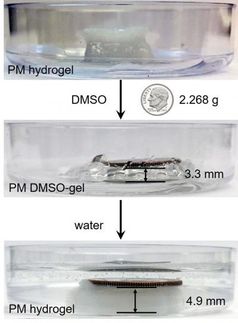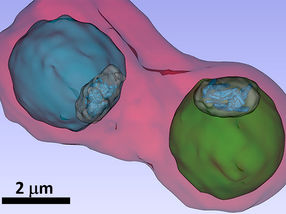Behavior modification could ease concerns about nanoparticles
In an advance that could help ease health and environmental concerns about the emerging nanotechnology industry, scientists are reporting development of technology for changing the behavior of nanoparticles in municipal sewage treatment plants — their main gateway into the environment. Their study was published online November 12 in ACS' journal Environmental Science & Technology.
Helen Jarvie from the UK Centre for Ecology and Hydrology and colleagues note that experts predict large increases in the production of nanoparticles — particles less than 1/1000th the width of a human hair — in the next decade. Manufacturers already use 2 million tons of nanoparticles each year in foods, cosmetics, medicines, and other consumer products. Studies have hinted that some nanoparticles could have adverse environmental health effects. Water discharged from sewage treatment plants is the major gateway for spread of nanoparticles to the aquatic environment. Scientists thus are focusing on how nanoparticles behave in wastewater and how that gateway might be closed off.
The study simulated (primary) sewage treatment to show that coating silica nanoparticles (similar to those used in ointments, toothpaste and household cleaners) with a detergent-like material made the nanoparticles clump together into the solid residue termed sewage sludge. Sludge often is stored in landfills or recycled as agricultural fertilizer. Uncoated nanoparticles, in contrast, stayed in the water and therefore remained in the effluent stream.
As the nanoparticles are simply too small to be visualized optically, the team used neutron scattering (at the UK's ISIS Facility) to view the sewage at the nano scale. The neutrons easily penetrate the sewage 'soup' and scatter strongly from the nanoparticles, allowing their aggregation behavior to be followed with time. The study demonstrates the potential for coating or otherwise changing the surface chemistry of nanoparticles to re-route their journey through sewage treatment plants, the scientists say.
Other news from the department science
These products might interest you

NANOPHOX CS by Sympatec
Particle size analysis in the nano range: Analyzing high concentrations with ease
Reliable results without time-consuming sample preparation

Eclipse by Wyatt Technology
FFF-MALS system for separation and characterization of macromolecules and nanoparticles
The latest and most innovative FFF system designed for highest usability, robustness and data quality

DynaPro Plate Reader III by Wyatt Technology
Screening of biopharmaceuticals and proteins with high-throughput dynamic light scattering (DLS)
Efficiently characterize your sample quality and stability from lead discovery to quality control

Get the chemical industry in your inbox
By submitting this form you agree that LUMITOS AG will send you the newsletter(s) selected above by email. Your data will not be passed on to third parties. Your data will be stored and processed in accordance with our data protection regulations. LUMITOS may contact you by email for the purpose of advertising or market and opinion surveys. You can revoke your consent at any time without giving reasons to LUMITOS AG, Ernst-Augustin-Str. 2, 12489 Berlin, Germany or by e-mail at revoke@lumitos.com with effect for the future. In addition, each email contains a link to unsubscribe from the corresponding newsletter.















![[Fe]-hydrogenase catalysis visualized using para-hydrogen-enhanced nuclear magnetic resonance spectroscopy](https://img.chemie.de/Portal/News/675fd46b9b54f_sBuG8s4sS.png?tr=w-712,h-534,cm-extract,x-0,y-16:n-xl)







































